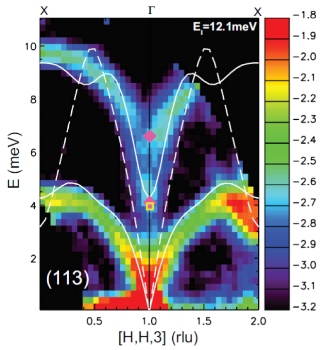Researchers at the Oak Ridge National Laboratory (ORNL) of the Department of Energy (DOE) have gained new insights on the thermal conductivity nature of thermoelectric materials through neutron analysis.
 Neutron scattering experiments performed at ORNL
Neutron scattering experiments performed at ORNL
The research could pave way for the development of a variety of products capable of converting heat into electricity. Scientists conducted tests on low heat loss or thermal conductivity nature of lead telluride at the ORNL's neutron facilities, the High Flux Isotope Reactor and the Spallation Neutron Source (SNS).
According to the report published in Nature Materials by Olivier Delaire, a Clifford Shull Fellow and researcher in the Neutron Sciences Directorate of ORNL, a unique coupling of phonons, also called microscopic vibrational modes, disturbs the atomic dynamics that carry the thermal energy in lead telluride.
In standard crystalline materials, which have an atomic structure similar to lattice, heat conduction is improved by the transmission of phonons across the lattice. Heat is conducted by atoms through vibration in a chain. Using SNS's Cold Neutron Chopper Spectrometer, Delaire's team determined that lead telluride showed a strong merging of phonons, which disrupt the lattice effect and nullify its heat conductivity.
By manipulating thermal conductivity in thermoelectric materials, minimum energy is dissipated and more heat can be used for power production. At present, thermoelectric materials are utilized to power spacecrafts whose reactor thermoelectric generators utilize the heat energy from decaying radioisotopes for power generation.
The improved thermoelectric materials could be used to recover waste heat and concentrate solar power to produce electricity. They could also be used in vehicle exhaust systems that use exhaust heat for power production.
The research was supported by DOE’s Office of Science as part of the S3TEC Energy Research Frontier Center.